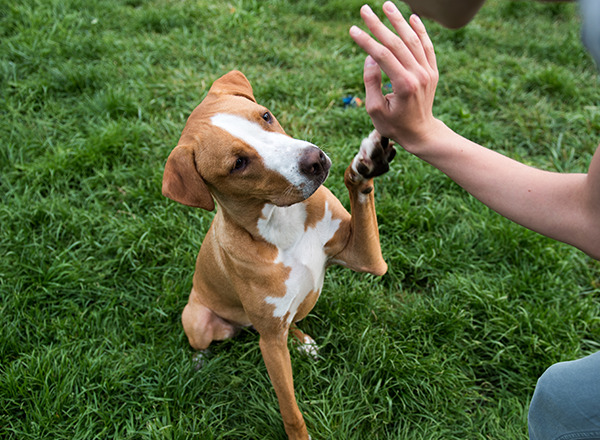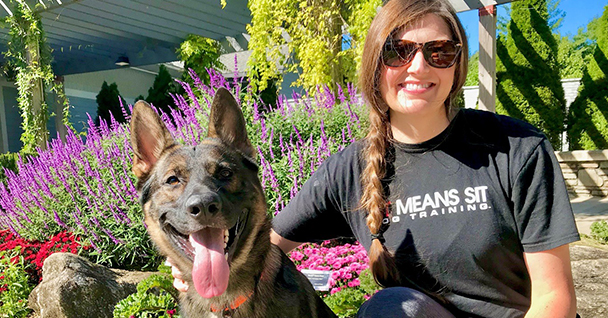The Advantages of Early Dog Training for a Mannerly Animal
Essential Tips for Successful Dog Training: An Overview for Pet Owners
Efficient pet dog training is a diverse procedure that calls for a critical strategy customized to both the animal's temperament and the owner's goals. Trick parts such as establishing regular commands, using positive support, and promoting very early socialization play crucial roles in fostering a well-adjusted canine friend. However, numerous family pet owners come across challenges that can prevent progression, resulting in frustration and unpredictability. Recognizing just how to browse these challenges can substantially boost the training experience, inevitably changing the partnership in between proprietor and pet dog. What are the important approaches that can be employed to ensure success in this venture?
Understanding Dog Actions
Recognizing pet behavior is crucial for effective training and cultivating an unified relationship in between pooches and their owners. Pet dogs connect mostly with body movement, articulations, and actions, making it essential for proprietors to translate these signals properly. Acknowledging a canine's position, tail setting, and ear alignment can offer insights into its emotion. As an example, a wagging tail does not always suggest happiness; it can additionally signify enjoyment or anxiety.

Socialization plays a significant role in pet actions; exposure to numerous atmospheres, individuals, and various other animals can dramatically affect a canine's temperament. Additionally, variables such as type qualities and private personality should assist training approaches, as some types might have certain behavior qualities that necessitate tailored approaches. By comprehending these aspects, proprietors can create a helpful atmosphere that motivates favorable habits, leading to successful training results and a much deeper bond with their animals.
Developing Constant Commands
Effective interaction with your pet starts with developing regular commands. This foundational component of training is important for fostering understanding in between you and your family pet. Consistency in the commands you make use of guarantees that your pet can dependably link details words or expressions with the desired actions.
When picking commands, choose clear, distinct words that are easy to separate and claim from each other. Prevent making use of similar-sounding commands that may puzzle your canine. For example, making use of "sit" and "stay" is proper, but "rest" and "struck" could bring about misconceptions.
Additionally, maintain the exact same tone and quantity for every command. Canines are sensitive to singing hints, so varying your tone can create complication.
It is equally crucial to ensure that all relative are on the same page regarding the commands utilized. A united front in command use will prevent mixed signals and strengthen the knowing process.
Positive Support Techniques
The power of positive reinforcement in pet dog training depends on its ability to urge preferred habits via benefits and praise. This method is grounded in the concept that behaviors adhered to by favorable outcomes are more probable to be duplicated. By integrating positive support right into your training regimen, you can successfully form your pet dog's actions in a useful way.
To execute favorable support, it's essential to identify what encourages your dog, whether it be deals with, toys, or spoken appreciation. When your pet dog does a preferred action, such as sitting on command, promptly compensate them with a treat or affection. This organization between the command and the favorable outcome strengthens their understanding.
It's essential to timing the benefits properly; providing the reinforcement within seconds of the desired habits helps your dog make the connection (dog training). Additionally, consistency is essential-- make sure that all relative utilize the very same commands and incentive systems to avoid complication

Progressively, you can minimize the frequency of deals with as your dog learns the behavior, transitioning to applaud or periodic rewards. This approach not only promotes a strong bond between you and your pet dog yet additionally promotes a favorable knowing setting, making training a satisfying experience for both.
Socialization and Communication
Consistently exposing your pet to a variety of settings, individuals, and other pets is important for their social development. Socialization must begin early, ideally throughout the important window of 3 to 14 weeks, when puppies are most receptive to brand-new experiences. However, older advice pet dogs can additionally benefit from ongoing socialization efforts.
Present your dog to various settings, such as parks, pet-friendly stores, and company website metropolitan locations. This exposure aids them adapt to numerous stimulations, reducing stress and anxiety and concern feedbacks. Encourage positive interactions with various other pet dogs and people, ensuring that these encounters are safe and regulated to promote confidence.
Use organized playdates with courteous dogs, as this can enhance your pet dog's social skills and instruct them appropriate actions. Obedience courses and training sessions also supply excellent possibilities for socializing, enabling your dog to communicate with others in a supervised atmosphere.
Display your canine's body movement throughout interactions, as this will assist you determine their convenience degree. Progressively boost direct exposure to even more challenging situations while guaranteeing that each experience is positive. A well-socialized dog is more likely to display well balanced behavior, making them a happiness to have in any setting.
Resolving Common Training Difficulties
Every pet proprietor will come across training obstacles at some point, no matter their pet dog's age or socializing degree. Identifying typical problems such as stubbornness, disturbances, and fearfulness can help in creating effective techniques for enhancement.

Interruptions during training sessions can derail focus. To combat this, start training in a quiet environment with marginal stimulations. Progressively present disturbances as the pet comes to be a lot more efficient in commands. Short, constant training sessions are likewise efficient in maintaining attention.
Terror can prevent a pet dog's knowing process. Steady desensitization to the resource of worry, paired with favorable reinforcement, can help reduce anxiousness. Persistence is important; never compel a pet dog into a situation that causes distress, as this might intensify the problem.
Ultimately, understanding and addressing these usual challenges with an organized technique will cultivate a much more effective training experience, enhancing the bond between pet dog and owner while advertising effective understanding.
Final Thought
In recap, successful pet training depends on a comprehensive understanding of canine actions, the establishment of constant commands, and the application of favorable reinforcement strategies. Socialization plays a critical function in creating well-adjusted animals, while resolving common training difficulties calls for perseverance and adaptability. By applying these important approaches, pet proprietors can cultivate a strong bond with their canines and advertise desirable behaviors, eventually bring about a harmonious connection in between human beings and their canine companions.
Comprehending pet actions is important for efficient training and cultivating a harmonious relationship between dogs and their proprietors.Socializing plays a significant role in canine habits; direct exposure to numerous environments, people, and other animals can considerably affect a pet's personality.The power of favorable support in dog training lies in its ability to encourage desired habits with benefits and praise. By integrating positive reinforcement into your training program, you can efficiently shape your canine's habits in a useful way.
In summary, successful dog her response training relies on a comprehensive understanding of canine behavior, the facility of regular commands, and the application of favorable support methods.